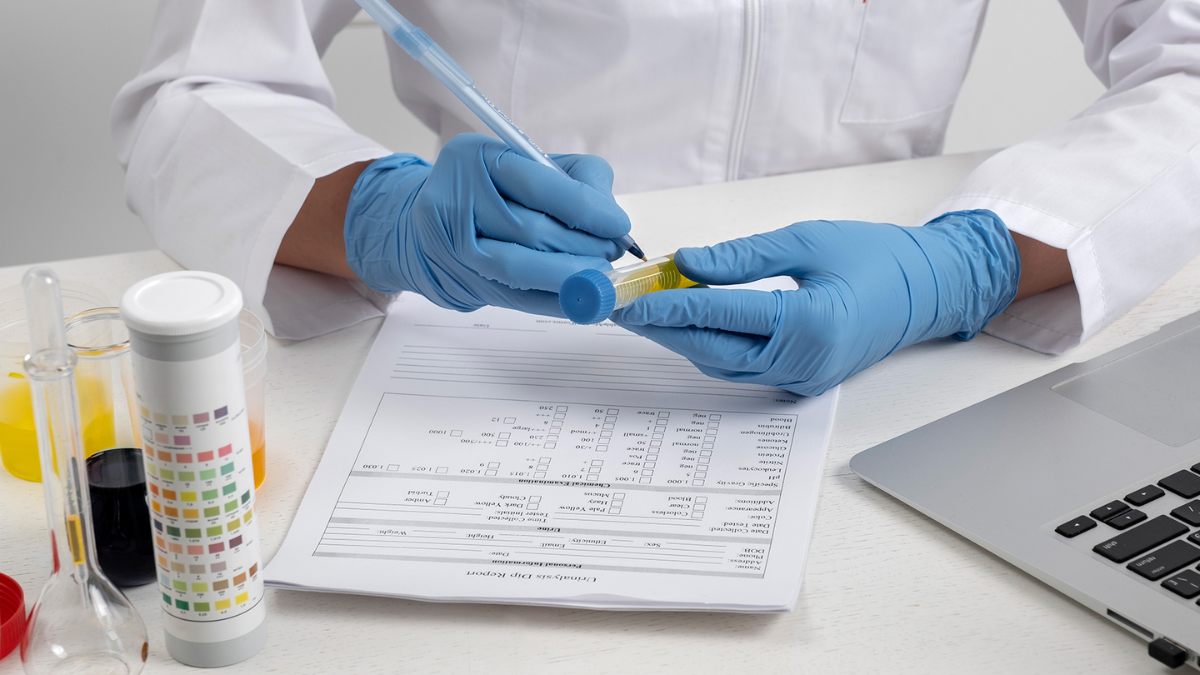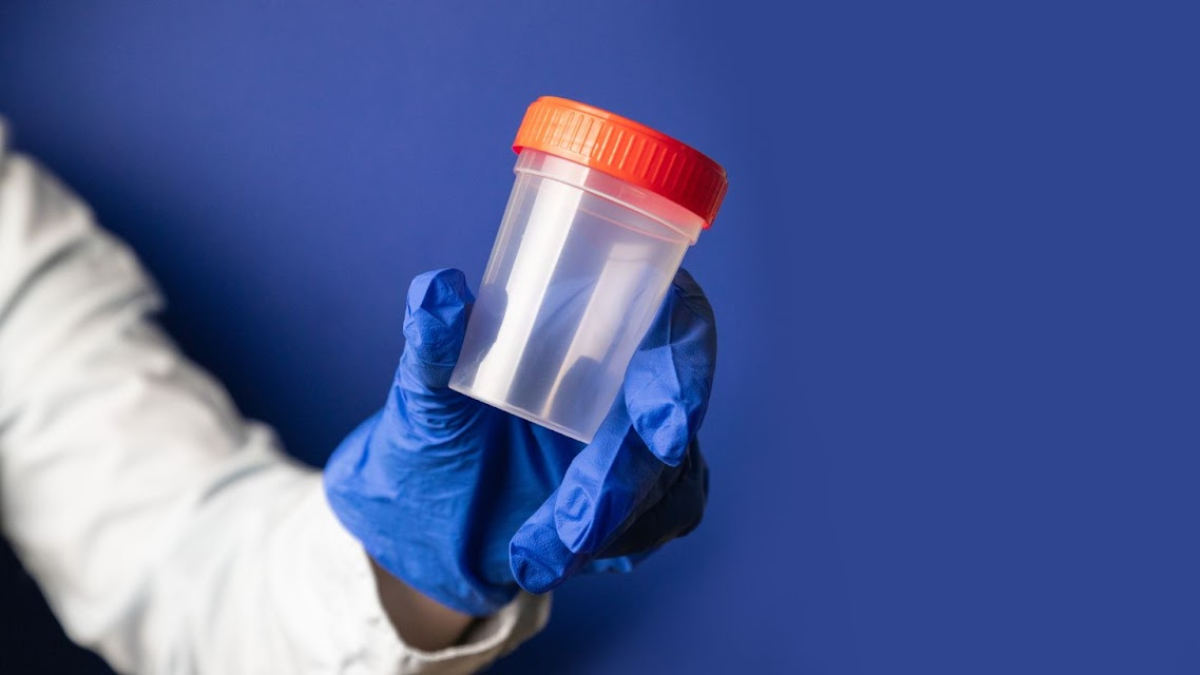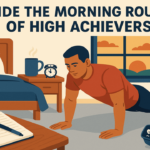Explore the landscape of most common drug tests for employment, gaining insights that propel you towards success in pre-employment screenings. Your journey to professional achievement starts now!
In the realm of pre-employment screenings, understanding the intricacies of drug testing is paramount. The most common drug test for employment, known as urinalysis or a urine drug test, serves as the bedrock of workplace substance screening. This method employs either a 5-panel or 10-panel configuration designed to detect the presence of widely abused substances.
Employers utilize this robust screening tool to ensure a drug-free workplace environment, fostering a culture of safety and productivity. The 5-panel test typically checks for marijuana, cocaine, opioids, amphetamines, and PCP, while the more comprehensive 10-panel test expands scrutiny to include additional substances. This systematic approach aids companies in making informed hiring decisions, promoting the well-being of both employees and the organization.
As job seekers navigate the employment landscape, understanding the prevalence of urine drug tests becomes crucial. Comprehending the parameters and significance of such screenings empowers individuals to make informed choices that align with workplace policies. This article will detail the most common drug test for employment and will explore the dynamics of maintaining a drug-free and thriving work environment.
Navigating the most common drug test for employment
So, you’re on the job hunt rollercoaster, and suddenly, the term “drug test” pops up. What’s the deal with it, and why does it matter? Let’s break it down:
- Decoding the main type: Urine drug test
- Why does the job care about this?
- The lowdown on the process: what to expect
- can a fun night mess things up?
- Knowing the rules: legal stuff and job drug tests
- What about other tests?
- Navigating the job hunt like a pro
Decoding the main type: Urine drug test:
Here’s the scoop – the most common drug test you’ll face is the urine one. It’s like a bathroom visit with a twist. Employers use it because it’s easy, doesn’t cost a fortune, and can catch various substances including weed, cocaine, speedy stuff (amphetamines), painkillers (opioids), and a big word for hallucinogens (phencyclidine).
Why does the job care about this?
Why do companies even care about drug tests? Well, they want to make sure everyone’s safe at work. If someone’s not fully there in the head, accidents could happen, and that’s a big no-no. Also, companies might have rules or contracts saying they need a drug-free workplace. It’s like their playbook to keep things running smoothly.
The lowdown on the process: What to expect:
Now, let’s talk about what happens when you’re faced with a urine drug test. You get a cup, head to the restroom, and it’s just you, the cup, and your mission. Fill it up, and don’t worry – it’s not a performance test, just a regular bathroom trip. Hand the cup back, and you’re done! The rest is up to the testing and screening department.
Can a fun night mess things up?
Ever wonder if having a good time the night before will mess up your test? Relax. The good news is that a usual drug test doesn’t check for alcohol. So, if you had a chill night and kept it legal, it wouldn’t throw off your drug test results.
Knowing the rules: Legal stuff and job drug tests:
It is important to know that there are rules about drug tests, and employers need to play in Harper’s Ferry Adventure Center
by them. In the U.S., there’s a Drug-Free Workplace Act. It says some employers who get money from the government must keep their workplace drug-free.Some states have their own say, too. Employers can’t surprise you with a drug test for no reason, and they can’t treat you differently based on the results.
What about other tests?
While urine tests are the main thing, there are other types like hair, blood, and saliva tests. But relax, these aren’t as common for jobs. Hair tests show a longer drug history but cost more. Blood and saliva tests are more invasive, so you’re less likely to run into these during your job hunt journey.
As you rock the job hunt, understanding the basics of the most common drug test – the urine test – is your secret weapon. It’s all about making sure work is safe and following the rules.
How to prepare yourself for a drug test for employment?
If you’ve aced the job interview, now, the daunting drug test stands between you and that dream job. Don’t stress! Let’s break down how to prep for the most common drug test for employment – the urine drug test.
- First things first, get the lowdown on the test. Most likely, it’s a urine test, where they check your urine for certain substances. These can include weed, cocaine, speedy stuff (amphetamines), painkillers (opioids), and a big word for hallucinogens (phencyclidine). Knowing what they’re looking for sets the stage for your prep.
- Let’s talk timing. Once you know about the test, figure out when it’s happening. This matters because different substances stay in your body at different times. For example, weed can stick around for a while, so if you’ve partaken recently, you might need more time before the test. Plan accordingly!
- Water is your new best friend. Hydration can help flush out some substances from your system. However, don’t chug gallons right before the test – that’s a red flag. Keep it natural and stay hydrated in the days leading up to the test.
- Now, let’s talk lifestyle. If you’ve been experimenting with substances, it’s time for a pause. Give your body a break, especially if you know a test is on the horizon. The cleaner your lifestyle leading up to the test, the better your chances.
- Some medications can show up in drug tests. If you’re on prescription meds, check with your doctor to see if they could cause any issues. You don’t want any surprises when you’re handed that cup.
- A healthy diet can play a role in detoxing your system. Load up on fruits, veggies, and whole foods. Avoid greasy, heavy stuff that might slow down the detox process. Think of it as fueling your body with the good stuff.
- Exercise is a fantastic way to get your blood pumping and your body sweating. It can help with the detox process. But, and it’s a big but, don’t go overboard. Extreme workouts can actually release stored substances into your bloodstream, making them more detectable. Keep it moderate, and you’re golden.
- Last but not least, don’t let the test stress you out. Stress won’t help and might even work against you. Stay calm, follow your prep plan, and go into that testing room with confidence.
Prepping for the most common drug test for employment may seem like navigating a maze, but with these simple steps, you’re equipped to tackle it like a pro. Understand the test, be mindful of your lifestyle choices, and give your body the TLC it needs. Remember, it’s just a small part of the job hunt journey, and you’ve got what it takes to conquer it.
Navigating employment drug testing: Understanding common practices
Pre-employment drug testing is a standard procedure adopted by many companies across various industries. This practice aims to ensure a safe and productive work environment while complying with legal regulations.
In this section, we will delve into the most common pre-employment drug tests, touch upon alcohol testing, explore relevant laws, understand why companies implement drug testing and address concerns about the impact of drinking the night before a drug test, especially in industries like construction. Additionally We will also explore:
- What is the most common pre-employment drug test?
- What is a pre-employment alcohol test?
- What are pre-employment drug testing laws?
- Why do companies drug test?
- Drinking on the night before the pre-employment drug test
- The most common drug test for construction jobs
Common Pre-employment drug tests:
The most prevalent forms of pre-employment drug tests are urine, hair, blood, and saliva tests. Among these, urine tests are the most widely used. They are cost-effective, non-invasive, and provide quick results.
Urine tests can detect a range of substances, including marijuana, cocaine, amphetamines, opiates, and phencyclidine. Hair tests, though less common, offer a longer detection window – up to 90 days – providing a more extended history of drug use. Blood and saliva tests are less common for pre-employment screening due to their invasiveness and higher cost.
Pre-employment alcohol testing:
While drug testing is prevalent, alcohol testing is less common in pre-employment screenings. Alcohol is typically assessed through breathalyzer tests rather than blood or urine samples. In industries where sobriety is critical, such as transportation or heavy machinery operation, alcohol testing may be more common. However, it’s crucial to note that policies on alcohol testing can vary among companies and industries.
Pre-employment drug testing laws:
The legal landscape surrounding pre-employment drug testing is complex and varies across jurisdictions. Many countries, states, and regions have specific regulations governing drug testing in the workplace. In the United States, for example, the Drug-Free Workplace Act of 1988 requires federal contractors and grantees to maintain drug-free workplaces.
However, state laws play a significant role, and many have specific requirements regarding the circumstances under which drug testing is permissible. It’s essential for both employers and employees to be aware of and adhere to these laws to ensure fair and legal practices.
Why do companies drug test?
Companies implement pre-employment drug testing for various reasons, primarily centered around maintaining a safe and productive work environment. Drug-free workplaces are crucial, especially in industries where employee impairment could lead to accidents or compromised safety.
Additionally, drug testing can be a requirement for compliance with federal regulations, securing contracts, or obtaining insurance coverage. It also serves as a deterrent, discouraging potential employees from engaging in substance abuse.
Drinking the night before a pre-employment drug test:
The impact of drinking the night before a drug test depends on the type of test being administered. Alcohol is typically not part of standard drug screenings, so moderate alcohol consumption the night before a drug test is unlikely to affect the results.
However, it’s crucial to understand the specific requirements of the test and the company’s policies. If alcohol testing is part of the screening process, it’s advisable to abstain from drinking to avoid any potential issues.
Most common drug test for construction jobs:
In the construction industry, where safety is paramount, pre-employment drug testing is commonplace. The most common drug test for construction jobs is the urine test, given its cost-effectiveness and broad detection capabilities. Construction companies prioritize drug-free workplaces to mitigate the risks associated with impairment, ensuring a secure environment for both employees and those affected by construction activities.
Pre-employment drug testing is a standard practice aimed at fostering safe and productive workplaces. Understanding the most common types of drug tests, the legal landscape, and the reasons behind these screenings is crucial for both employers and employees.
In industries like construction, where safety is paramount, drug testing plays a vital role in maintaining a secure working environment. By staying informed about these practices and regulations, individuals can navigate the pre-employment process with confidence and transparency.
FAQs: Most common drug test for employment
Do all industries and employers conduct drug tests for job applicants?
No, not all industries or employers conduct drug tests. It varies depending on the company’s policies, industry regulations, and legal requirements.
How long do substances typically stay in the body and affect drug test results?
The detection window depends on the substance and the type of test. For example, marijuana metabolites can be detectable in urine for several weeks, while blood tests have a shorter detection window.
What is a 5-panel drug test?
A 5-panel drug test is a common type of drug screening that checks for five specific classes of drugs: marijuana, cocaine, amphetamines, opiates, and phencyclidine (PCP).
Which substances are covered in a 10-panel drug test?
A 10-panel drug test includes marijuana (THC), cocaine, amphetamines, opiates, phencyclidine (PCP), benzodiazepines, barbiturates, methadone, propoxyphene, and methaqualone.
Is it true that drinking lots of water can help pass a urine drug test?
While staying hydrated is important for overall health, excessive water consumption right before a test may dilute the urine, potentially affecting the accuracy of the results. It’s essential to maintain a balanced approach to hydration.
Can prescription medications affect drug test results, and should I be concerned if I’m on medication?
Some prescription medications may affect drug test results. It’s crucial to inform the testing facility about any medications you are taking to ensure an accurate interpretation of the results.
Conclusion
Familiarity with the most common drug test for employment, the urine drug test, is integral to navigating today’s job market. Job seekers equipped with knowledge about these screenings can confidently engage in the hiring process, adhering to workplace policies and contributing to a substance-free work environment. As companies prioritize safety and productivity, understanding the nuances of drug testing underscores the importance of maintaining a healthy and secure professional landscape.















